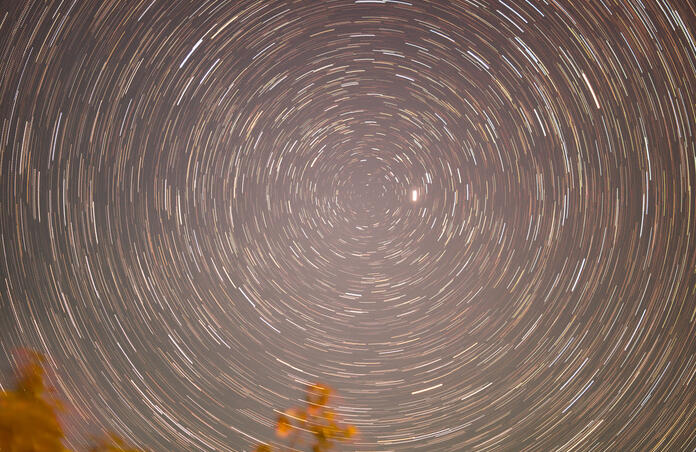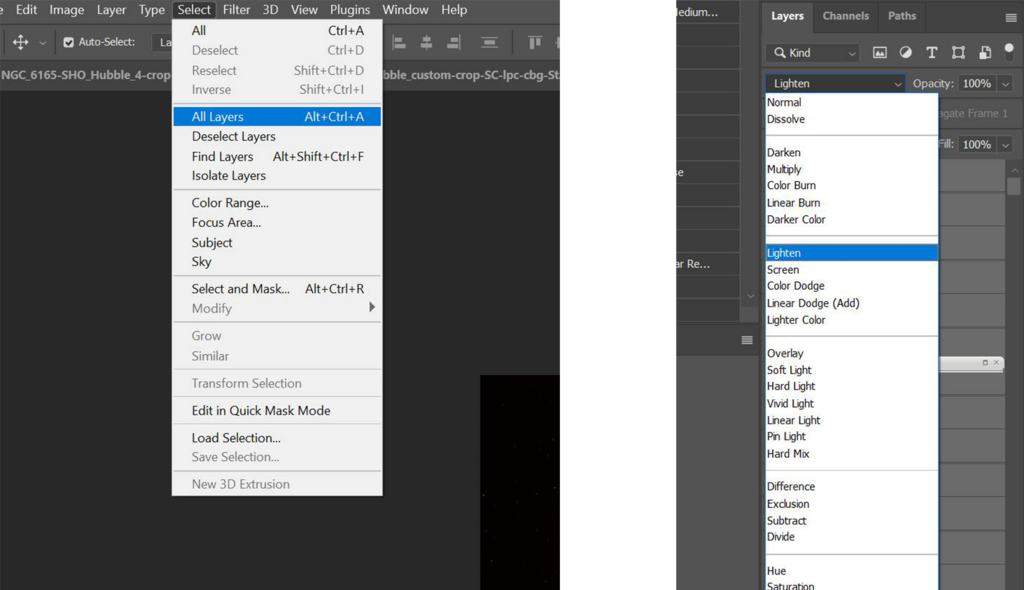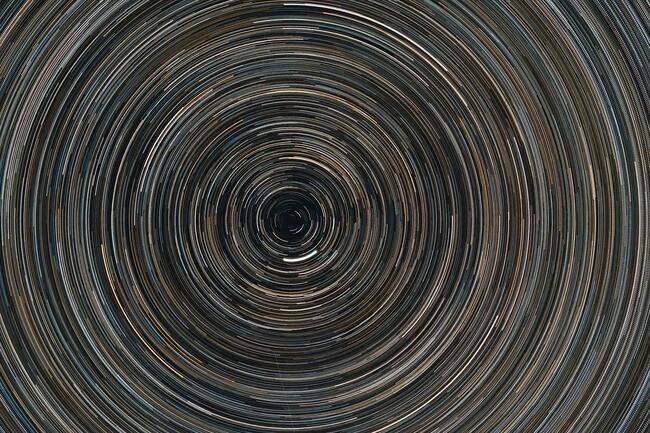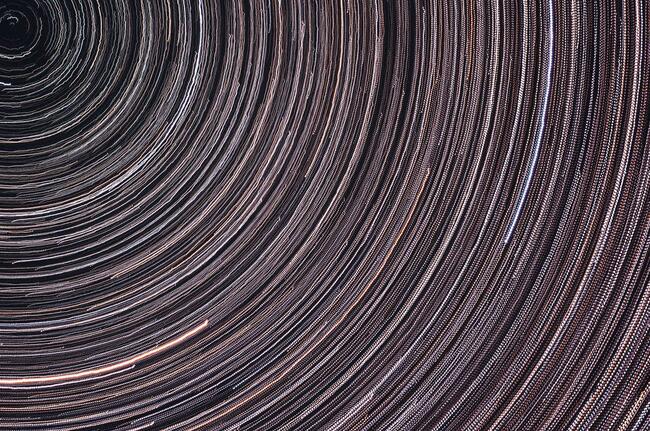Easy Star Trails Using Photoshop

Sometimes I have my camera with me and I want to do a little astrophotography, but I have forgotten any kind of mount. So, what do I do in that situation? I could do super short pics and attempt stacking. I could do pics of the moon too. But what if I wanted something that looks visually awesome? I will do star trails!
Star trails are pretty easy to do as long as you have a camera and an intervalometer (or your camera has one built in). You set your camera up on a sturdy tripod, point it in a direction, and let it go. I do anywhere from 30 second to 2 minute star trails, but you can use whatever works for you. Make sure to take them in a raw format for best results.
Once I have all of my images I like to put them in one folder and mark it with something descriptive, such as "Star trails X location X lens or telescope X direction" so I know what I am going for. I've found the more you can do the cooler it looks, and if you get something like trees or structures that adds to it.
The next thing I do is go ahead and fire up Photoshop, then do File > Scripts > Load Files into Stack. That opens up a box that allows you to browse and select your files. Make sure that after you have them selected that you do not check the box to have it try to align the images. This is why I do the folder with just what I want in it so I can do a Ctrl + A so I get all of them at once without having to dig through them.

Next you will do Select > All Layers. You need them all to be selected after they are all loaded. Then you will go to your layers and change them from "Normal" to "Lighten" and that causes your imaged to come up as trails! It is at this point you will flatten the image by goign to Layer > Flatten Image and process as normal to get it how you want it.



This blog post was originally published in our Telescope Live Community.
The Community represents Telescope Live's virtual living room, where people exchange ideas and questions around astrophotography and astronomy.
Join the conversation now to find out more about astrophotography and to improve your observation and post-processing skills!
